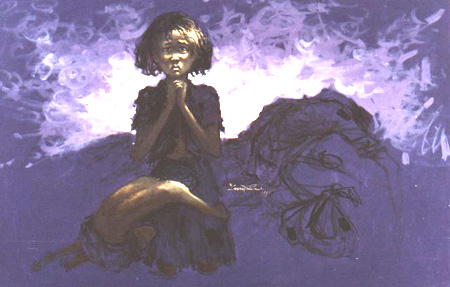 |
|||||||||||||||||||||||
 |
|||||||||||||||||||||||
 |
|||||||||||||||||||||||
 |
|||||||||||||||||||||||
 |
|||||||||||||||||||||||
|
|
|||||||||||||||||||||||
 |
|||||||||||||||||||||||
 |
||||||||||||
 |
||||||||||||
 |
||||||||||||
|
A Summary of Cambodia and The Killing Field Years |
||||||||||||
 |
||||||||||||
|
From 1975 thru 1979, approximately 2 million Cambodian people died under the Khmers Rouges. From 1978 onward, an estimated 500,000 Cambodian people died as a result of the Vietnamese invasion and occupation and subsequent guerilla wars. The Khmers Rouges (Red Cambodians) came into prominence when Saloth Sar (later known as Pol Pot), and others left Phnom Penh and began an insurrection in 1963. Saloth Sar, born 1928, was educated in Paris, where he committed himself to the French Communist Party. He was a private school history and geography teacher in Phnom Penh, and later worked as a journalist. After joining the illegal Communist Party, he advanced to Deputy Secretary-General. Khieu Samphan was born in 1931, and went to France on scholarship in 1954. His 1959 thesis, Cambodia's Economy and Industrial Devleopment would become the cornerstone of the economic/social policies of the Khmers. The thesis dictated that ruling-classes and cities were parasites, aragrarian/labor society was utopia, and that the entire populace needed to be removed to the countryside. Samphan was also a journalist, and joined the Khmers Rouges in 1967. Although 'neutral', Cambodia is sucked into the already escalating Vietnam war in 1963. 18 March '70 - General Lon Nol takes power from Norodom Sihanouk. 30 April '70 - Formal invasion of Cambodia by US and SVN forces to 'clear cut the sanctuaries' of Communist guerillas. By 1972, North Vietnamese occupy eastern and southern Cambodia, while the Khmers Rouges occupy the West and North. 1973, Paris Peace Accords - Although the warring factions abated their activities, the US continued a barrage of bombing on the Khmers Rouges in Cambodia through August. The Khmers Rouges had by then in excess of 50k troops. New Year's 1975 - The Khmers begin a final assault against their own people. By April, Lon Nol flees, the American ambassador and staff are evacuated on 12 April, and the Khmers Rouges enter Phnom Penh on 17 April. The immediate implementation of the agrarian/labor policy of Khieu is begun, with 2.5 million Cambodians driven from Phnom Penh. The high number of people is the result of war refugees who had sought refuge in the city after their villages were destroyed during the war. Hospitals and schools were emptied. All public officials that were captured, were slaughtered, along with the tribal Chans, of whom 60,000 were murdered outright for their religious beliefs. Three years and eight months of Khmers Rouges control left the country - now named Democratic Kampuchea - without a single city or currency. Abolition of family, property rights and religion was immediate. They religiously followed Samphan's thesis to create a peasant class and rebuild a totalitarian, Communst society upon it. Beginning in 1975, virtually anyone who went to school, wore glasses, read a book or worked was deemed an enemy, and they and their families were either murdered outright or worked to death as slave labor. |
||||||||||||
 |
||||||||||||
|
To save ammunition, beating people to death and disembowelment was encouraged. 1977 - Pol Pot sends Khmer troops into Vietnam, murdering hundreds, perhaps thousands. Vietnam retaliates with a full-scale incursion. Pol Pot breaks diplomatic relations with Hanoi. Hanoi responds by creating a guerilla army of dissident Cambodians, many of whom had either been a part of the slaughter of Vietnamese or had survived Pol Pot's rampage. 1978 - Massacres begin in the eastern Cambodian corridor. Senior cadres were butchered, along with everyone who had contact with the Vietnamese, which wasn't hard given that Vietnam bordered this section of Cambodia and Saigon was a mere 40 miles away. A breakaway opposition group fled to the bush and in response, Pol Pot ordered the murder of everyone he could find... 100,000 people in 3 months, and 1/3 of the population sent on a forced march to western 'Democratic Kampuchea'. Border excursions accounted for thousands of Vietnamese peasants being butchered as well. 24 December '78 - Vietnam invades Cambodia and takes Phnom Penh by January 1977. By February, most of Cambodia is occupied by Vietnam. 1979 - Vietnamese invasion troops enter Tuol Sleng (S21), the Central Committee's security office. It was a torture and execution center for 'important prisoners', where over 20,000 people had been murdered. The cadre at Tuol Sleng had maintained meticulous records of their atrocities... names, numbers of victims, identification numbers, photographs before, during and after execution, and summaries of the day's activities. If one looks at the photos of those who suffered through Tuol Sleng, one will find pages of photos of young girls... so much for 'important or high-ranking prisoners.' Only seven survivors are known to have escaped the horrors of Tuol Sleng. Lower classed prisoners were taken to The Killing Fields and simply butchered. During this nightmare, Prince Sihanouk was allowed to return and be a figurehead in Cambodia. Therefore, he bears some of the blame for these atrocities. Once the 'enemies' of the Angka - Organization of Khmers Rouges, the official government - had been slaughtered, Pol Pot turned his hate against anything connected to Vietnam. As a result, more than half of the Cambodian Communists and 4 of the 10 people who led the Khmers to victory in 1975, were also destroyed. Their torture and interrogations were found in Tuol Sleng. In retreat, the Khmer Rouges took several hundred thousand peasants and fled to the mountains of northern Cambodia. However, by year end, Vietnam defeated most pockets of resistance and drove the hard-core Khmers into camps along the Thailand border. 1989 - Vietnam, after a 10 year occupation and continued battle with the Khmers Rouges, withdraws its troops from Cambodia. The Khmers Rouges continued to use the northwest, Anlong Veng, as a stronghold until last year with mass defections from the senior ranks impacting the group. They continued their policy of brutal slaughter and taking captives, such as Christopher Howe from Great Britain, until early 1997, when the inner circle within the Khmer Rouge came undone. May/June 1997 - Pol Pot angers his supporters by executing one of his most loyal lieutenants and his entire family of 11 people. In response, many within his group breakaway and take him and Khieu Samphan prisoner. Requests for information on the American POWs and MIAs who went missing in Cambodia have been primarily ignored. Several sets of remains have been excavated o unilaterally returned, but the fate of known Prisoners and Last Known Alive remains to be seen. |
||||||||||||